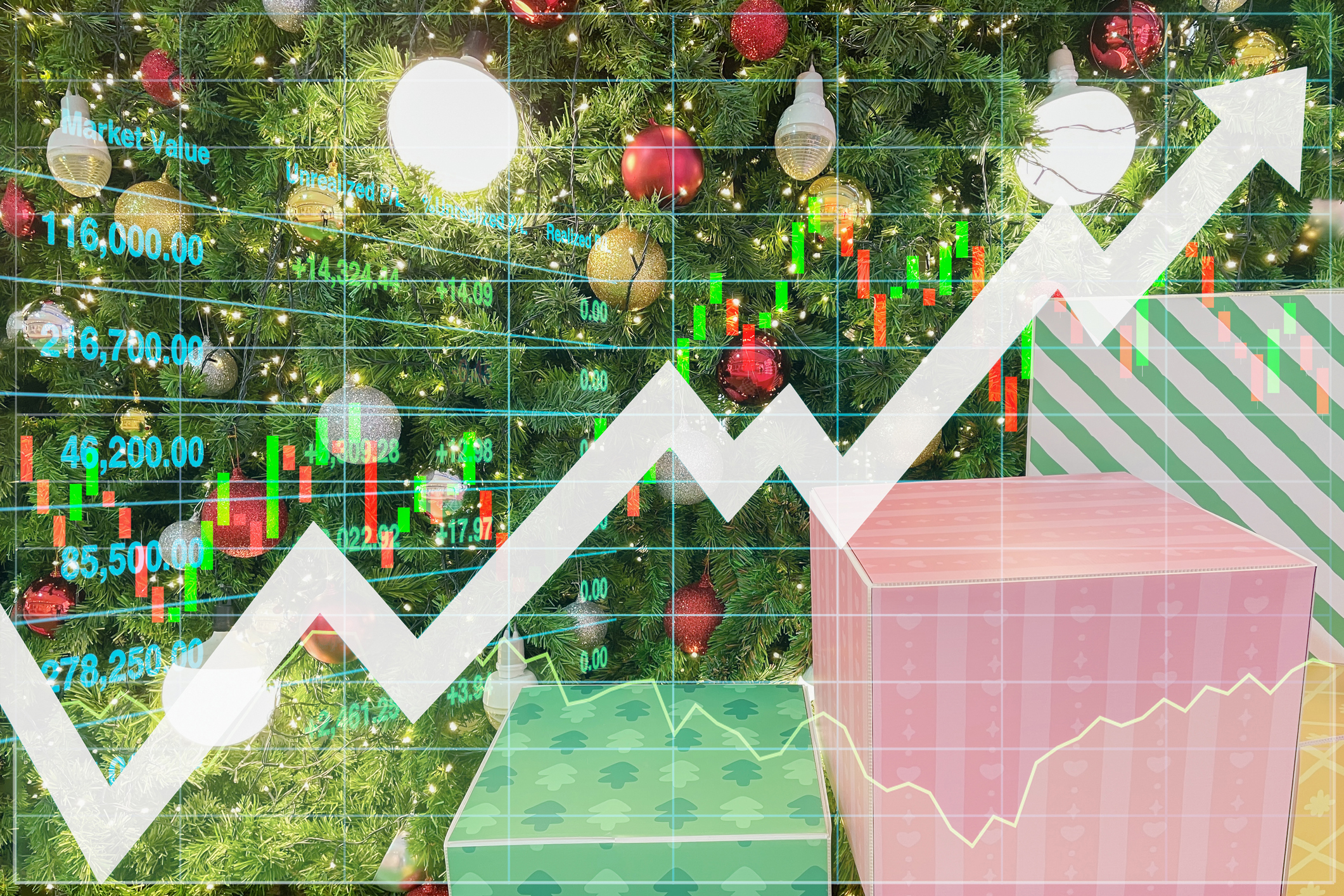Five Considerations About Municipal Bonds if Tax Cuts Sunset
Tax rates are set to revert to 2017 levels after 2025, so now is the time to revisit your muni strategy and plan for optimized portfolio adjustments.


When the Tax Cuts and Jobs Act (TCJA) became law in January 2018, it represented the largest redo of the U.S. tax code in decades — with far-reaching implications for individuals and businesses alike.
Many of its provisions were only temporary and are slated to sunset after 2025. If that occurs as scheduled, the effects will again be extensive, headlined by a considerable boost in the portfolio advantages and appeal of municipal bonds for many investors. Here are five things to keep in mind:
1. A potential reversion to higher marginal tax rates would be positive for muni bond demand.
From just $107.88 $24.99 for Kiplinger Personal Finance
Become a smarter, better informed investor. Subscribe from just $107.88 $24.99, plus get up to 4 Special Issues

Sign up for Kiplinger’s Free Newsletters
Profit and prosper with the best of expert advice on investing, taxes, retirement, personal finance and more - straight to your e-mail.
Profit and prosper with the best of expert advice - straight to your e-mail.
In a higher-tax environment — and with higher tax-equivalent yields — demand for munis is likely to spike, making now an opportune time to invest before a potential run-up in demand.
The TCJA reduced the top marginal tax rate on individuals to 37% from 39.6%. If the TCJA sunsets after 2025, the highest marginal tax rate is expected to return to 39.6%.
The tax-equivalent yield on a muni increases as tax rates rise — making the tax exemption on munis more valuable for individuals who pay higher taxes. For example, the tax-equivalent yield on a tax-exempt muni yielding 5% is 7.93% at a 37% tax rate — but increases to 8.27% at a 39.6% tax rate.
2. The number of taxpayers subject to the alternative minimum tax (AMT) would increase dramatically.
The TCJA enacted a higher AMT exemption and an increase in the income at which the exemption begins to phase out. If the TCJA expires after 2025, it is estimated that the number of taxpayers paying the AMT would increase to 7.6 million in 2026 from current levels of about 200,000.
Certain Private Activity Bonds (PABs) issued in the muni market are subject to the AMT, muting the tax benefits for investors who are subject to this tax. With the potential for a major expansion of the AMT on the horizon, investors must remain vigilant about security selection, as we anticipate spreads on PABs, such as some airport bonds, would widen relative to other munis that are not subject to the AMT.
3. A potential lifting of the state and local tax (SALT) cap could benefit demographics — and issuer credit quality — in high-tax states.
Prior to the TCJA’s enactment, there was no limit on the amount of state and local taxes that taxpayers could deduct from their federal taxes. However, under the TCJA, a SALT cap was imposed, limiting the federal deduction to $10,000 for all tax filers.
The SALT cap disproportionately affects taxpayers in high-tax states. The cap’s end would lower the tax burden of residents in those states and could reduce any tax-driven incentive for residents to move elsewhere. The positive impact on the states’ demographics would support the longer-term credit quality of the muni issuers within their borders.
4. If discussions around changes in tax law signal a threat to the muni tax exemption, we could see accelerated issuance ...
Past tax law deliberations often have hinted at the potential for a rollback of the federal tax exemption for muni interest.
Under the TCJA, muni issuers lost the ability to advance-refund — refinance at a lower rate — tax-exempt bonds with proceeds from another tax-exempt bond issuance prior to the original bonds’ call date. As the TCJA legislation came together, some speculated that the impact on muni issuers would be even greater, with not-for-profit borrowers, such as private colleges, hospitals and charter schools, losing the ability to issue tax-exempt bonds.
5. ... But elimination of the tax exemption is highly unlikely.
Heading into this year’s election, we could hear fresh talk of a potential change to the muni tax exemption to help subsidize other elements of tax law change.
But the exemption is critically important to state and local governments, schools, hospitals, electric utilities, water and sewer systems, airports and toll roads that fund the nation’s vital infrastructure. Additionally, the exemption’s cost to the U.S. Treasury is quite modest — about $40 billion annually or $400 billion over 10 years — compared with the $4.6 trillion estimated cost of extending the TCJA for 10 years.
Because the exemption is essential to financing U.S. infrastructure, we do not believe its elimination is likely. However, in that extreme scenario, current tax-exempt munis, if grandfathered into the exemption, would become significantly more valuable — with considerable benefit for current investors.
As the prospects for TCJA’s wind-down become clearer, we will likely see asset prices start to respond to changing views regarding munis’ appeal. Every good planning discussion anticipates the future in enough time to get ready for it. That means that now is the time to revisit a muni strategy — and plan the portfolio adjustments needed to take full advantage if tax law takes a turn.
GWP-3742527PM-O0724W
Related Content
- Three Reasons I Like Municipal Bonds
- Bond Basics: Pick Your Type
- TIPS vs I-Bonds
- Best Bond Funds to Buy
Profit and prosper with the best of Kiplinger's advice on investing, taxes, retirement, personal finance and much more. Delivered daily. Enter your email in the box and click Sign Me Up.

Dan leads the municipal fixed income strategic direction and investment perspectives for Nuveen. Dan serves as lead portfolio manager for high-yield municipal strategies, along with tax-exempt and taxable municipal strategies that include customized institutional portfolios, open-end funds and closed-end funds. Prior to his current role, in 2010, Dan helped establish and expand the platform as Head of Taxable Municipals, and he has deep experience serving clients worldwide.
-
 'Humbug!' Say Consumers, Despite Hot GDP: Stock Market Today
'Humbug!' Say Consumers, Despite Hot GDP: Stock Market Today"The stock market is not the economy," they say, but both things are up. Yet one survey says people are still feeling down in the middle of this complex season.
-
 The SEC Is Concerned for Older Investors and Retirement Savers. Here's What You Should Know
The SEC Is Concerned for Older Investors and Retirement Savers. Here's What You Should KnowThe SEC focusing on older investors, retirement and college savers, and private securities. Here's how those changes impact you.
-
 Vesting, Catch-Ups and Roths: The 401(k) Knowledge Quiz
Vesting, Catch-Ups and Roths: The 401(k) Knowledge QuizQuiz Test your understanding of key 401(k) concepts with our quick quiz.
-
 'Humbug!' Say Consumers, Despite Hot GDP: Stock Market Today
'Humbug!' Say Consumers, Despite Hot GDP: Stock Market Today"The stock market is not the economy," they say, but both things are up. Yet one survey says people are still feeling down in the middle of this complex season.
-
 The SEC Is Concerned for Older Investors and Retirement Savers. Here's What You Should Know.
The SEC Is Concerned for Older Investors and Retirement Savers. Here's What You Should Know.The SEC focusing on older investors, retirement and college savers, and private securities. Here's how those changes impact you.
-
 Vesting, Catch-Ups and Roths: The 401(k) Knowledge Quiz
Vesting, Catch-Ups and Roths: The 401(k) Knowledge QuizQuiz Test your understanding of key 401(k) concepts with our quick quiz.
-
 Why You Should Pay Attention to Company Guidance
Why You Should Pay Attention to Company GuidanceUnderstanding how corporate profit forecasts affect analysts’ estimates and stock ratings can help you make investment decisions.
-
 How to Protect Yourself and Others From a Troubled Adult Child: A Lesson from Real Life
How to Protect Yourself and Others From a Troubled Adult Child: A Lesson from Real LifeThis case of a violent adult son whose parents are in denial is an example of the extreme risks some parents face if they neglect essential safety precautions.
-
 To Build Client Relationships That Last, Embrace Simplicity
To Build Client Relationships That Last, Embrace SimplicityAs more automation becomes the norm, you can distinguish yourself as a financial professional by using technology wisely and prioritizing personal touches.
-
 Client Demand Is Forcing Financial Advisers to Specialize: How to Deliver
Client Demand Is Forcing Financial Advisers to Specialize: How to DeliverThe complexity of wealthy clients' needs — combined with AI and consumer demand — suggests the future of financial planning belongs to specialized experts.
-
 Stocks Rise to the Spirit of the Season: Stock Market Today
Stocks Rise to the Spirit of the Season: Stock Market TodayInvestors, traders and speculators are beginning to like the looks of a potential year-end rally.